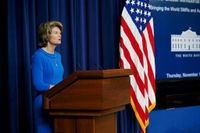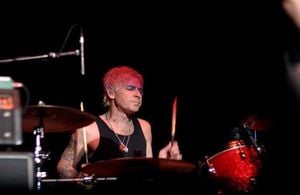Federal support for public broadcasting and the arts has long been a lifeline for communities across the United States, especially in remote and rural regions. But in a dramatic turn this week, President Trump’s push to eliminate funding for the Corporation for Public Broadcasting (CPB) cleared Congress, sending shockwaves through public media, the arts, and a host of community programs nationwide. The bill, which passed the Senate by a razor-thin margin of 51–48, marks the first time in decades that the CPB—created by Congress in 1967—will be left without federal backing.
The White House justified the move as a response to what it described as “liberal bias” at NPR and PBS, a claim that has long been a rallying cry among some conservative lawmakers and commentators. But for the more than 200 small radio stations that rely on CPB grants, the implications are far more than political. In Alaska, for example, dozens of stations now face the prospect of shutting down, raising concerns about the loss of vital emergency infrastructure in some of the nation’s most isolated communities. According to TheBurg and other local outlets, the effects of the funding cut are already being felt on the ground.
“If you don’t like what’s going on within NPR, you think that there’s too much bias there, we can address that,” said Senator Lisa Murkowski of Alaska, one of only two Republicans to oppose the bill. “But you don’t need to gut the entire Corporation for Public Broadcasting.” Her words reflect a growing unease even among some in the president’s own party about the breadth and speed of the cuts.
For stations like KUCB in Unalaska, the loss of CPB support is nothing short of existential. The station, which previously drew more than half its budget from federal grants, is now down to a single reporter. Station leaders warn that if a tsunami or volcanic eruption were to strike the Aleutian chain—a very real risk in this volatile region—they might not be able to issue live alerts. “The rural communities are definitely gonna be hit the hardest,” said Austin Roof, director of KSDP in Sand Point, Alaska. Private fundraising, Roof added, simply cannot fill the gap in areas where high poverty and limited advertising revenue are the norm.
Other stations, like KYUK in Bethel, have long served as cultural and informational bridges, broadcasting in both English and Yup’ik to connect Indigenous residents to regional news and traditions. KDLG in Dillingham, which now operates with just two employees, calls radio “a basic form of communication.” Without CPB funding, these stations risk going silent, leaving entire regions without access to local news, weather, and emergency information.
While Alaska’s plight is particularly acute, the funding crisis is national in scope. Harrisburg-based WITF, for example, will lose $1.3 million a year—about 8% of its annual public media budget—starting in October 2025. “I’m grateful that we’re in a position where we will be able to weather it,” Ron Hetrick, president and CEO of WITF’s parent organization Pennon, told TheBurg. “For us, this is not a fatal blow, but it’s not insignificant either.” Hetrick was quick to note that smaller, more rural stations, as well as public music stations like Philadelphia’s WXPN, face even greater threats from the funding cuts.
The ripple effects extend far beyond public broadcasting. Numerous federal programs—including food assistance, school and parks funding, housing and immigrant support, and grants for libraries, museums, and environmental initiatives—have seen their funds reduced, frozen, or eliminated altogether. In May, the National Endowment for the Arts (NEA) abruptly cancelled grants to hundreds of arts groups, most of them local and small, and the Trump administration has proposed shutting down the NEA entirely. The impact was immediate for organizations like the Susquehanna Folk Music Society, which saw a $22,000 grant for a multi-year banjo program withdrawn in early May. “The N.E.A. is updating its grantmaking policy priorities to focus funding on projects that reflect the nation’s rich artistic heritage and creativity as prioritized by the president,” read the boilerplate email received by affected groups.
Yet, amid the uncertainty, there have been some last-minute reprieves. Peter Winter Lee, executive director of the Susquehanna Folk Music Society, appealed the denial of his group’s grant and, to his surprise, learned in early August that funding would be restored. As a result, the group’s program, “The Banjo: Torchbearers and Trailblazers,” will proceed later this year at venues like the Fort Hunter barn and the West Shore Theatre. Still, Lee acknowledges that the future is far from secure: “We’ve tried to apply to the NEA every year, but we ultimately did not apply this year. We kind of took a gap year just to see where the dust settles.”
With federal support in flux, both public media and arts organizations are increasingly turning to their local communities for help. “I count ourselves lucky to have the community base and the megaphone that we do to reach out and make our case for support,” said Hetrick. But he also noted the growing competition for donations as nonprofits across sectors scramble to fill the gaps left by federal cuts. “There are so many needing to find a new way right now.”
Philanthropic efforts have offered some stopgaps. Report for America is placing two reporters in Alaska, and local foundations have pledged emergency dollars to help keep stations afloat. But station managers and advocates warn that these efforts, while welcome, are not enough to ensure long-term survival. Indigenous media groups, for instance, have dismissed a deal announced by Senator Mike Rounds of South Dakota to redirect $9.4 million from unused climate funds to tribal radio stations as “a Band-Aid”—short-term and unreliable.
As the debate rages in Washington, Murkowski’s vocal opposition to the cuts has made her a champion for small communities whose cohesion and safety depend on public broadcasting. But her defiance has also highlighted her political vulnerability in what some now call “Trump’s Senate.” Murkowski has hinted that she might be more effective serving Alaska directly, leaving open the possibility of a run for governor.
In the meantime, community leaders are urging residents to step up. “If we can just move those numbers up a couple percent, that makes a really big difference in terms of our ability to do more with public media,” said Hetrick, noting that only about 10% of WITF’s 300,000 weekly listeners currently support the station financially. Lee, for his part, encourages people to get involved beyond donations: “We will always take donations, but the best way is to get to know us. Come to a concert and bring a friend—then come to another concert. Just be there, become part of our community.”
As federal funding priorities shift and the future of public broadcasting and the arts hangs in the balance, communities across the country are being called upon to decide what they value most—and how far they’re willing to go to keep it alive.







